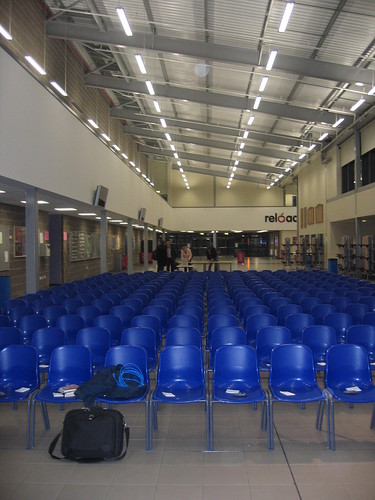One of the dominant themes in all the dialogue around educational change is the need to encourage and foster creativity and independence in our students. The focus, we say, should be on developing self directed classrooms as the demand for initiative and problem solving skills grows with the rate of change in our ever shifting society landscape.
One of the results of this new emphasis is the call for teachers to 'let go' and work along side students in a more facilitative role. "Allow more freedom and the learning will happen," is the cry. So, one of the strongest values I seek to develop in my classroom is the student's ability to be more in control in the decisions about their own learning. BUT - there is, however, a need for balance with this approach. There are strong parallels here with the analogy of caged birds.
There are some classrooms that aim to put their students in little manageable cages with only enough room to stand up and hardly enough to stretch their wings. You could argue that this would be the dominant model of the 20th century class. The result, of course, being that the bird never really exercises its wings to their full potential.
The other danger is in freeing the bird to fly too soon. Even nature has learnt that a mother bird restrains their young before allowing them to fly the nest. The danger in pushing them out too soon, obviously, can have disastrous effects! Also, if we allow birds to fly too far before they have mastered the art, then we risk them going in circles, or even worse, flying into danger.
The balance that is needed for creativity to grow, in my experience, is for a student to have just the right amount of scaffolding and support. If we drown our students in rules, direction and dictation we risk suffocating them. Likewise, if we allow students to roam around with little support, discipline and direction then I think we are actually doing them a disservice.
So, here are a few things I use in class to provide that structure and guidance.
1. Co- Constructed Criteria
This is a criteria we created together to help us work out what a great Skype is. We had a look at what skype does and used our prior knowledge to make this chart. It helps guide us through each step of the process.
2. Self Review Slips
These Self Review slips are printed, one for each student, and pasted into their writing books. When they have finished their first draft they use the slips to do a self ad peer review that helps them guide their second draft. It also helps me guide the feedback I give, too.
There is plenty of license for them to add their personality and own style to the writing. This slip gives them some parameters to work within a specific genre of writing. Once their second draft is completed they are ready to post their writing to their blogs.
3. Challenge Blogs
One strategy I've used a few times is to create a blog of different activities that are targeted at specific learning intentions.
This blog -
"The Not Lost Project" is a blog I've made. It has a combination of links to a variety of mapping, compass and directions geometry skills that target levels 2 and 3 of the NZ Curriculum. The special ingredient to these types of blogs, I've found, is that the student is able to choose the activities he or she completes - but still cover the learning objectives needed. They are motivated to complete 2 tasks on every page to earn their 'Scout Badge'. These blogs even become a quality homework option, too.
4. Independence Licences
This is a fantastic strategy I've picked up from a colleague I once worked with. There are 4 levels of the license and students can work up or down the levels depending on the responsibility they show in and out of class. With each level come certain rights, also. Level 1, for example, ensures that the student work in plain sight of the teacher and asks for permission to use the computer, leave the room and go onto a task. Level 4, however, can work in any learning space around the school, is allowed to use any resource at 'mostly' any time and is largely free to make their own learning decisions throughout the day.
I've found this strategy to be incredibly motivating and rewarding for the students who are genuinely making an effort to become independent and responsible - and rewards them for doing so!
So, let's continue to create and use the right amount of structure for our students to become the creative, problem solving, engaged learners that we know they can be! Free as a bird - with a few fences thrown in...
 Like most of us in the teaching arena we were probably shocked, but then not. It follows the National Party direction down 'business model' avenue. "It's all about freedom of choice and the free market," they hum. We should be adding, "Children are not products in your factories!" to the soundbite war.
Like most of us in the teaching arena we were probably shocked, but then not. It follows the National Party direction down 'business model' avenue. "It's all about freedom of choice and the free market," they hum. We should be adding, "Children are not products in your factories!" to the soundbite war. So lastly, here's a small shot across their bow. For what it's worth. And yes, Mum, I'm trying to stay positive.
So lastly, here's a small shot across their bow. For what it's worth. And yes, Mum, I'm trying to stay positive.




















































.JPG)


